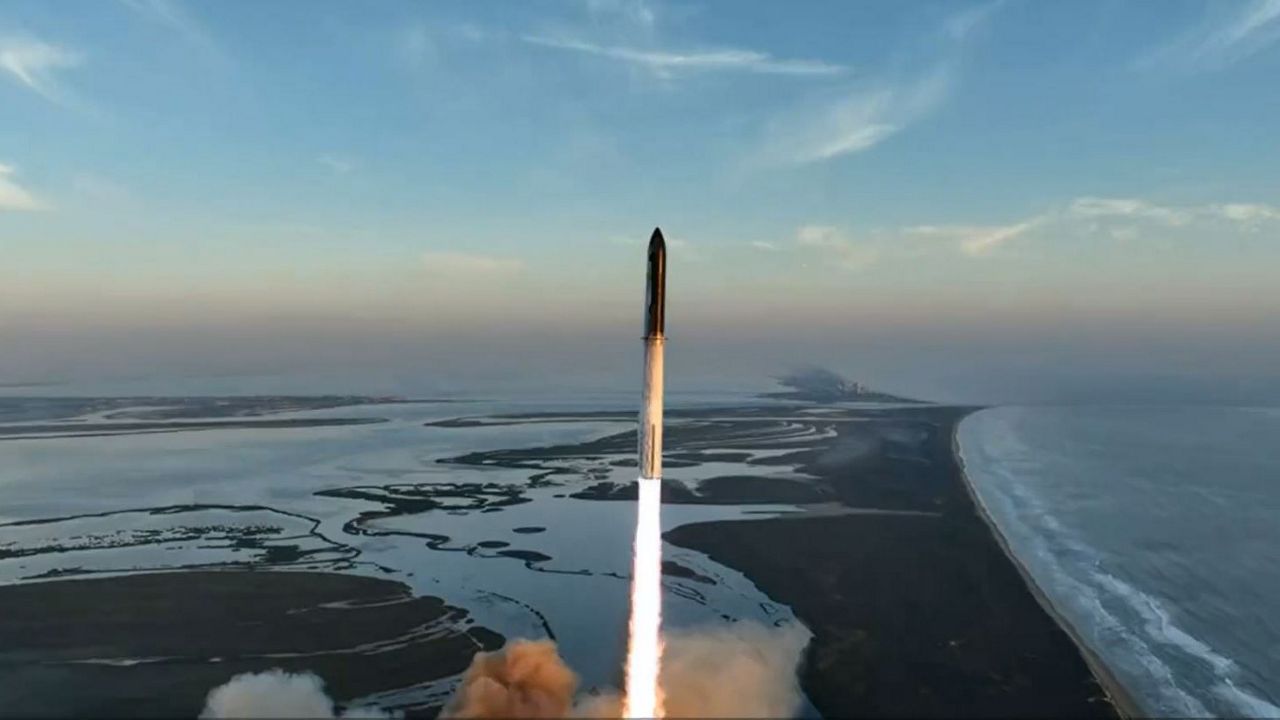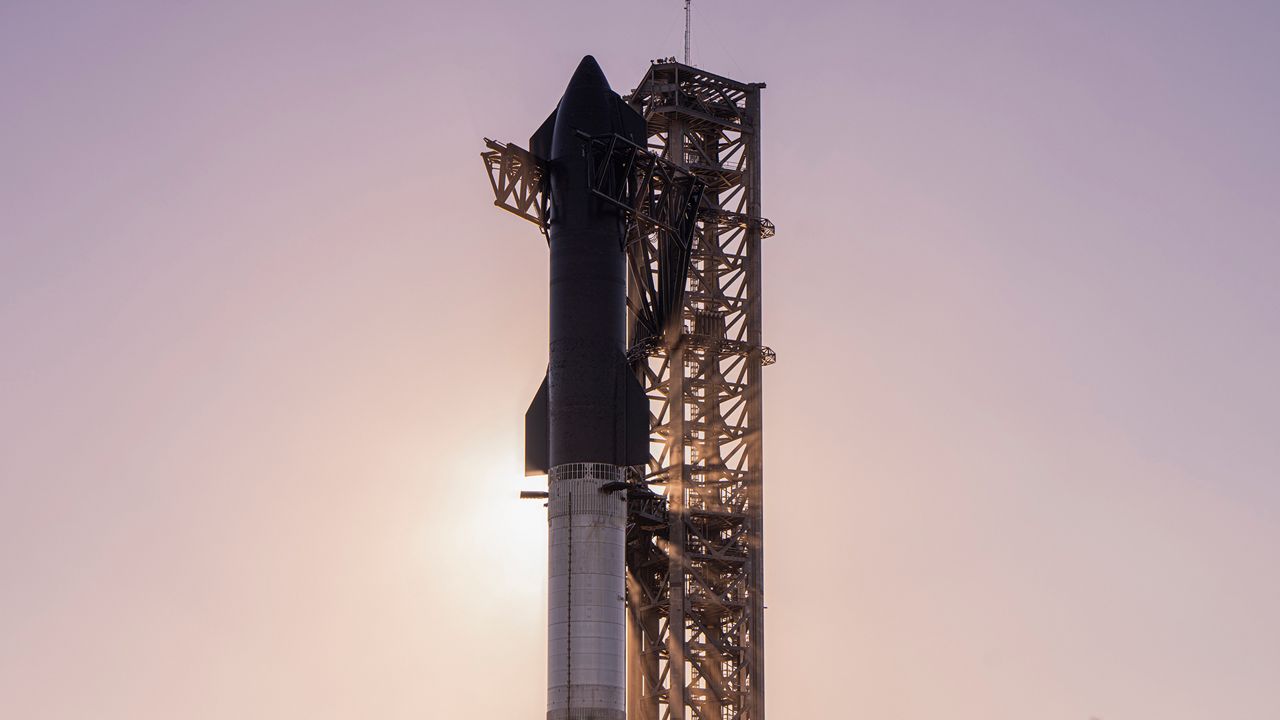BOCA CHICA BEACH, TX. — SpaceX was forced to blow up its Starship rocket during the second test flight on Saturday, nearly seven months after the first attempt ended in an explosion.
The new stage separation, called hot stage separation, worked, but ended up destroying the Super Heavy rocket.
Minutes later, SpaceX was unable to regain signal to the Starship spacecraft and was forced to destroy it.
This information is preliminary and subject to change:
— The FAA ✈️ (@FAANews) November 18, 2023
A mishap occurred during the @SpaceX Starship OFT-2 launch from Boca Chica, Texas, on Saturday, Nov. 18. The anomaly resulted in a loss of the vehicle. No injuries or public property damage have been reported.
Known collectively as Starship when stacked together, both the Super Heavy rocket and the Starship spacecraft launched from Boca Chica Beach, Texas. The launch was briefly held at T-minus 40 seconds before lifting off at 8:03 a.m.
Back in April of this year, SpaceX attempted to launch the Starship, but a series of failures caused the massive rocket to blow up.
Since then, the Federal Aviation Administration issued a series of checklists before California-based company can attempt another go, which included 63 corrective actions.
But on Wednesday, the FAA gave its approval for SpaceX to launch its second flight test of the Starship.
The history of the first launch attempt
Starship left the launch pad from SpaceX’s Starbase on April 20, but it did not go according to plan. After climbing 24 miles (39 kilometers) into the deep blue and over the Gulf of Mexico, the massive 397-foot-tall (121-meter) Starship ran into problems.
Several of the 33 Raptor engines failed to ignite, which resulted in Starship losing altitude and begin to tumble. When SpaceX tried to activate the Autonomous Flight Safety System (AFLSS) to blow up the rocket, there was a 40-second delay before it actually exploded.
At the time, SpaceX stated as the ship was climbing, fuel leaks occurred that caused fires to erupt at Starship’s tail second. The fires cut the connection with the main flight computer, which lead to a loss of control.
In addition, the launch pad was heavily damaged and debris from both Starship and the pad lead to wildlife groups to file lawsuits against the FAA, saying the agency should have considered any possible environmental impacts of the Starship program near Boca Chica Beach in South Texas.
Getting Starship ready for its second flight test
Both the Super Heavy rocket, with its 33 Raptor engines fueled by thousands of tons of sub-cooled liquid oxygen and liquid methane, and the Starship are designed to be reusable.
The Starship is designed to carry a crew of 100 people and cargo to Earth orbit, the moon and ultimately the red planet Mars, according to the ship’s user guide.
But after the destruction of the first ship, this second one has been upgraded, according to SpaceX.
SpaceX stated that it has improved the hardware to both the booster and engine of the ship and expanded a pre-existing fire suppression system.
“SpaceX has since implemented leak mitigations and improved testing on both engine and booster hardware. As an additional corrective action, SpaceX has significantly expanded Super Heavy’s pre-existing fire suppression system in order to mitigate against future engine bay fires,” the company stated.
The famed Raptor engines of the Super Heavy rocket have also seen upgrades.
“Additionally, SpaceX has engineered a new electronic Thrust Vector Control (TVC) system for Super Heavy Raptor engines. Using fully electric motors, the new system has fewer potential points of failure and is significantly more energy efficient than traditional hydraulic systems,” SpaceX stated.
As for the ship’s auto destruct system that was delayed, SpaceX verified that it has developed the AFSS to better its reliability.
Quite a few SpaceX enthusiasts know how a Falcon 9 rocket’s first-stage booster separates from the second during a launch, there is a new form of separation that is being introduced to the second flight attempt.
Called the hot-stage separation system, the Starship’s second-stage engines are designed to ignite to push the ship away from the booster.
Spectrum News reached out to SpaceX for comment on the improvements made to Starship, but has not yet heard back from the company.
In anticipation of the launch, Cameron County Parks and Recreation in Texas issued a press release, saying the Boat Ramp Facility at Isla Blanca Park, which is near the launch site, will be closed temporary on Friday for safety reasons.
It is expected to be reopened after the launch and “all safety concerns have been removed,” it stated.
Some information on Starship
If all goes smoothly when the launch does happen, the flight director will conduct a poll to begin loading the 3,400 tons of propellant into the Super Heavy booster followed by the 1,200 tons of propellant into Starship.
The stacked Starship craft and rocket dwarfs the Statue of Liberty by nearly 100 feet.
When it does launch, the 33 Raptor engines will ignite, fueled by a combination of liquid methane and liquid oxygen.
Starship is designed to be a fully reusable rocket, with both the Super Heavy booster and the Starship spacecraft being capable of multiple flights.





